Full plan of the new lunar NASA program "Artemis" (Artemis)
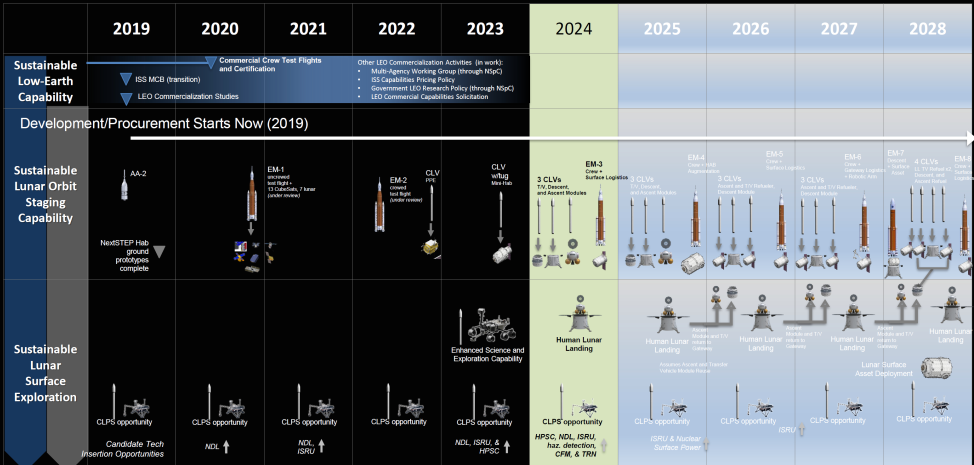
An ambitious lunar project for 10 years, according to which 37 launches from the Earth, 5 landings with the crew, and the creation of the first lunar base will be carried out.
The moon is in fashion again and will soon be crowded there, for sure in its orbit.
The orbits of the moon are now :
')
- LRO probe (Lunar Reconnaissance Orbiter) from NASA;
- the Chinese Lunjiang-2 microsatellite and the Queqiao satellite transponder in halo-orbit around the L2 point of Earth-Moon L2 system.

Here is the scientific satellite grouping in the outer space of the solar system:
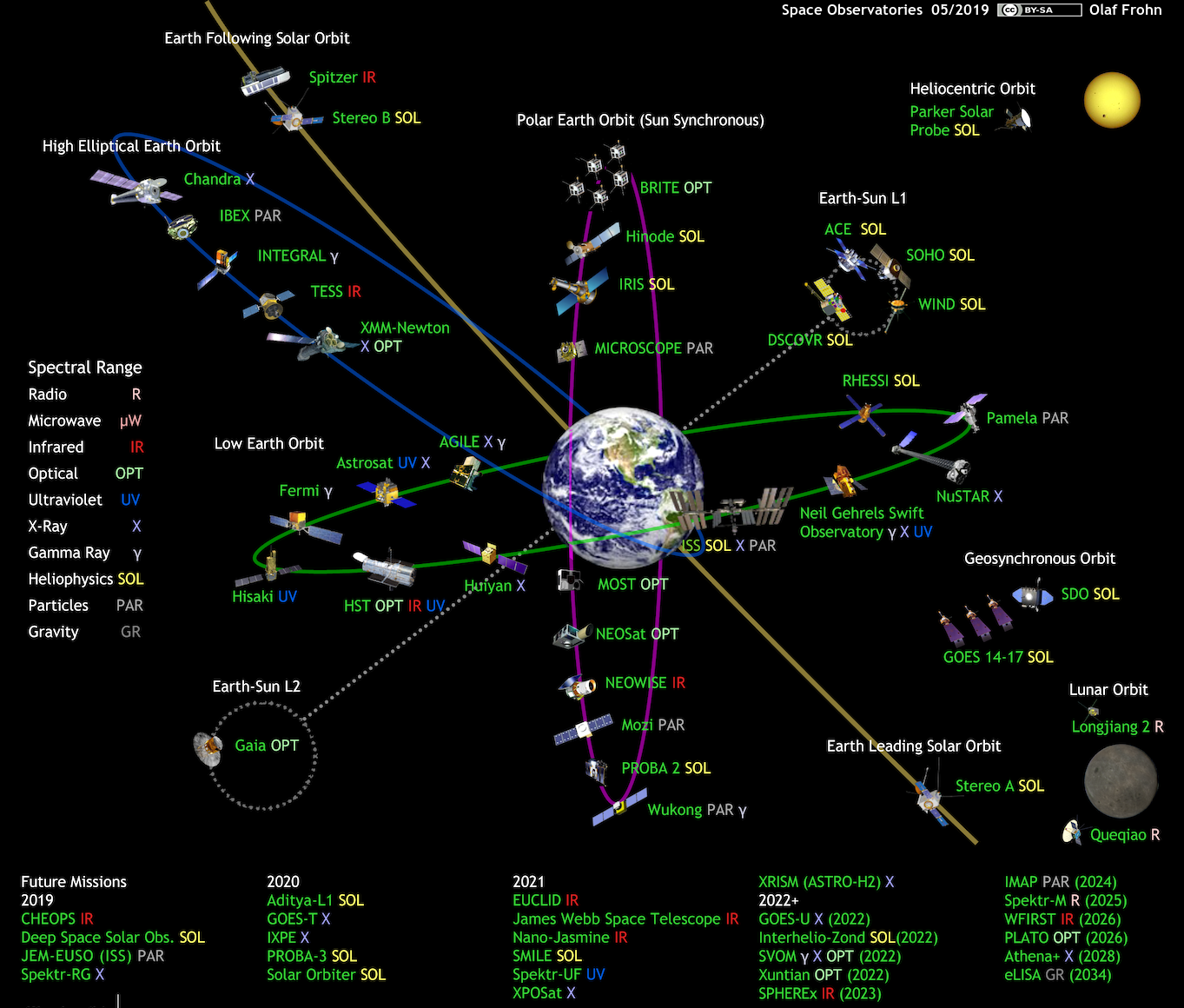
China’s plans to explore the moon (the Chang'e-4 mission is currently working on the far side of the moon, the Chang'e-1 and Chang'e-3 programs are implemented):
2020 is the “Chang'e-5” mission with a returnable module to Earth, which will deliver several kilograms of lunar soil for new research and discoveries.

And then ... The Poles of the Moon will be a new direction of research - these are already the missions of Chang'e-6 (7-8), some of which are planned to be completed until 2030.
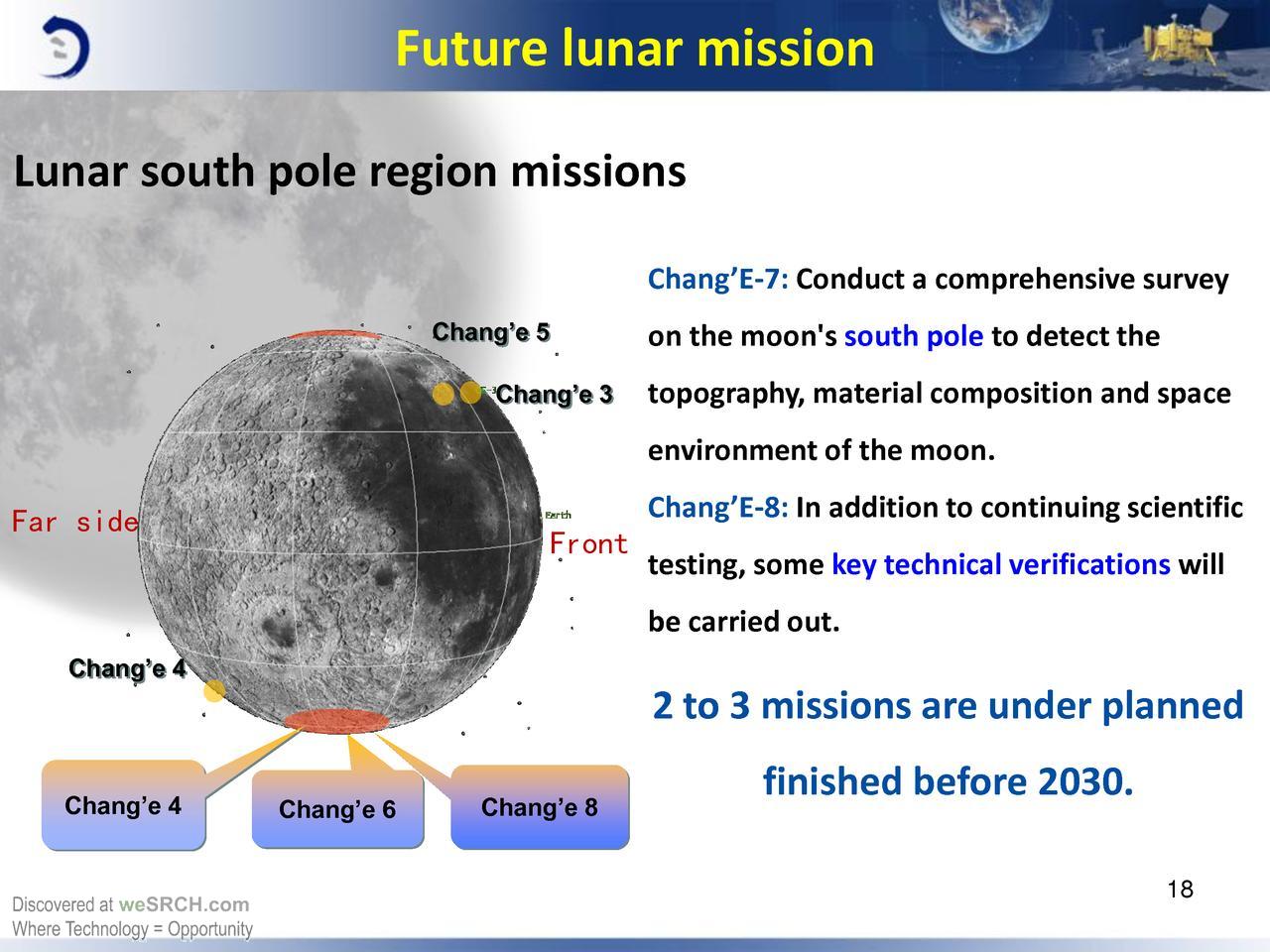
And so, in May 2019, NASA launches the lunar program "Artemis" with the first milestone - landing its astronauts on the lunar surface in 2024.
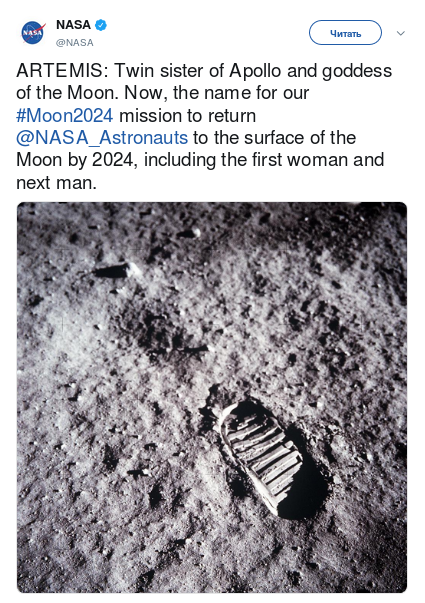
After all, Artemis is the ancient Greek goddess and sister of Apollo, whose name was borne by the first US lunar program of the 1960s and 1970s, during which 12 American astronauts visited the Moon during six expeditions, and more than 380 kg of lunar soil samples were delivered to Earth.
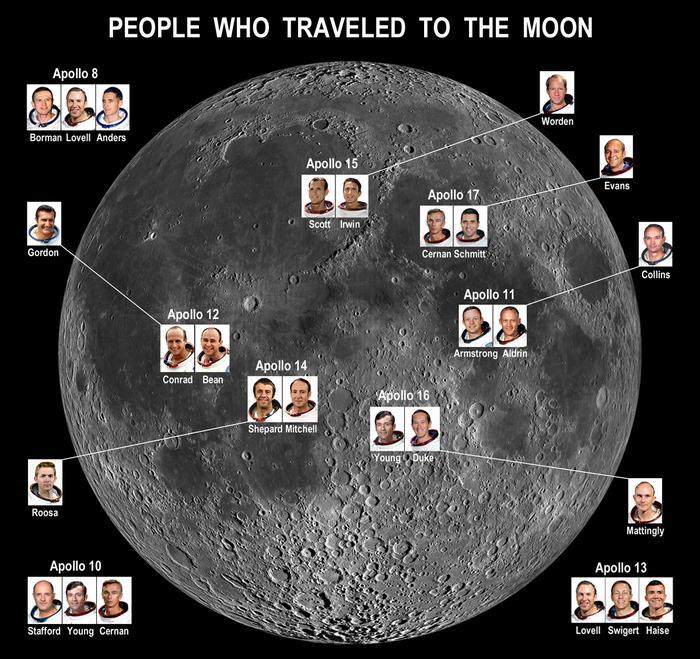
Flight schedule Apollo 17
1 - Start of the Saturn-5 launch vehicle with the Apollo spacecraft.
2 - SAS Department (Emergency Rescue System).
3 - Separation of stage I (rocket S -1C), turning on engine of stage II.
4 - Separation stage II (rocket S-2), turning on engine stage III (rocket S-4B), which brings the Apollo spacecraft to low earth orbit.
5 - Near-Earth orbit.
6 - The launch of the Apollo spacecraft on the flight trajectory to the Moon (re-activation of engine of stage III).
7 - Separation of the main unit.
8 - Rebuilding the main unit.
9 - Docking the main unit to the lunar cabin.
10 - Apollo spacecraft department.
11 - Correction of the flight path of the Apollo spacecraft.
12 - The second correction of the flight path of the Apollo spacecraft.
13 - Stage III (rocket S-4B) is transferred to the trajectory of direct contact with the lunar surface.
14 - Last trajectory correction.
15 - Construction of the lunar orbit. The parameters of the first two orbits are: apolations 316.6 km, periselenias 94.4 km.
16 - Construction of a lower orbit of the Apollo spacecraft with the following parameters: apowlenii 109.2 km, peripelenia 27.7 km; two astronauts go into the lunar cabin.
17 - Separation of the lunar cabin and the main unit at the twelfth orbit.
18 - Turning on the engines of the lunar cabin to reduce the landing speed.
19 - Cabin landing.
20 - Circulation in the circumlunar orbit of the main unit of the Apollo spacecraft.
21 - Construction of the orbit of the main unit with the parameters: aposieleny 130.2 km, perislenia 100.5 km.
22 - Start the takeoff steps of the lunar cabin.
23 - Approximation of the take-off stage with the main unit.
24 - Docking take-off stage with the main unit.
25 - Takeoff stage separation.
26 - Takeoff stage on the way to the surface of the moon.
27 - Separation of an automatic satellite in a selenocentric orbit.
28 - Transition to the flight path to the Earth.
29 - Trajectory Correction.
30 - The second trajectory correction (if necessary).
31 - Last correction after separation of the crew compartment and the engine compartment.
32 - Crew compartment orientation when returning to Earth.
33 - Descent vehicle at an altitude of 122 km.
34 - Loss of signal upon entry into the atmosphere.
35 - Waterfall.

1 - Start of the Saturn-5 launch vehicle with the Apollo spacecraft.
2 - SAS Department (Emergency Rescue System).
3 - Separation of stage I (rocket S -1C), turning on engine of stage II.
4 - Separation stage II (rocket S-2), turning on engine stage III (rocket S-4B), which brings the Apollo spacecraft to low earth orbit.
5 - Near-Earth orbit.
6 - The launch of the Apollo spacecraft on the flight trajectory to the Moon (re-activation of engine of stage III).
7 - Separation of the main unit.
8 - Rebuilding the main unit.
9 - Docking the main unit to the lunar cabin.
10 - Apollo spacecraft department.
11 - Correction of the flight path of the Apollo spacecraft.
12 - The second correction of the flight path of the Apollo spacecraft.
13 - Stage III (rocket S-4B) is transferred to the trajectory of direct contact with the lunar surface.
14 - Last trajectory correction.
15 - Construction of the lunar orbit. The parameters of the first two orbits are: apolations 316.6 km, periselenias 94.4 km.
16 - Construction of a lower orbit of the Apollo spacecraft with the following parameters: apowlenii 109.2 km, peripelenia 27.7 km; two astronauts go into the lunar cabin.
17 - Separation of the lunar cabin and the main unit at the twelfth orbit.
18 - Turning on the engines of the lunar cabin to reduce the landing speed.
19 - Cabin landing.
20 - Circulation in the circumlunar orbit of the main unit of the Apollo spacecraft.
21 - Construction of the orbit of the main unit with the parameters: aposieleny 130.2 km, perislenia 100.5 km.
22 - Start the takeoff steps of the lunar cabin.
23 - Approximation of the take-off stage with the main unit.
24 - Docking take-off stage with the main unit.
25 - Takeoff stage separation.
26 - Takeoff stage on the way to the surface of the moon.
27 - Separation of an automatic satellite in a selenocentric orbit.
28 - Transition to the flight path to the Earth.
29 - Trajectory Correction.
30 - The second trajectory correction (if necessary).
31 - Last correction after separation of the crew compartment and the engine compartment.
32 - Crew compartment orientation when returning to Earth.
33 - Descent vehicle at an altitude of 122 km.
34 - Loss of signal upon entry into the atmosphere.
35 - Waterfall.
The full plan of the NASA "Artemis" lunar program:

The first planned lunar five-year plan:
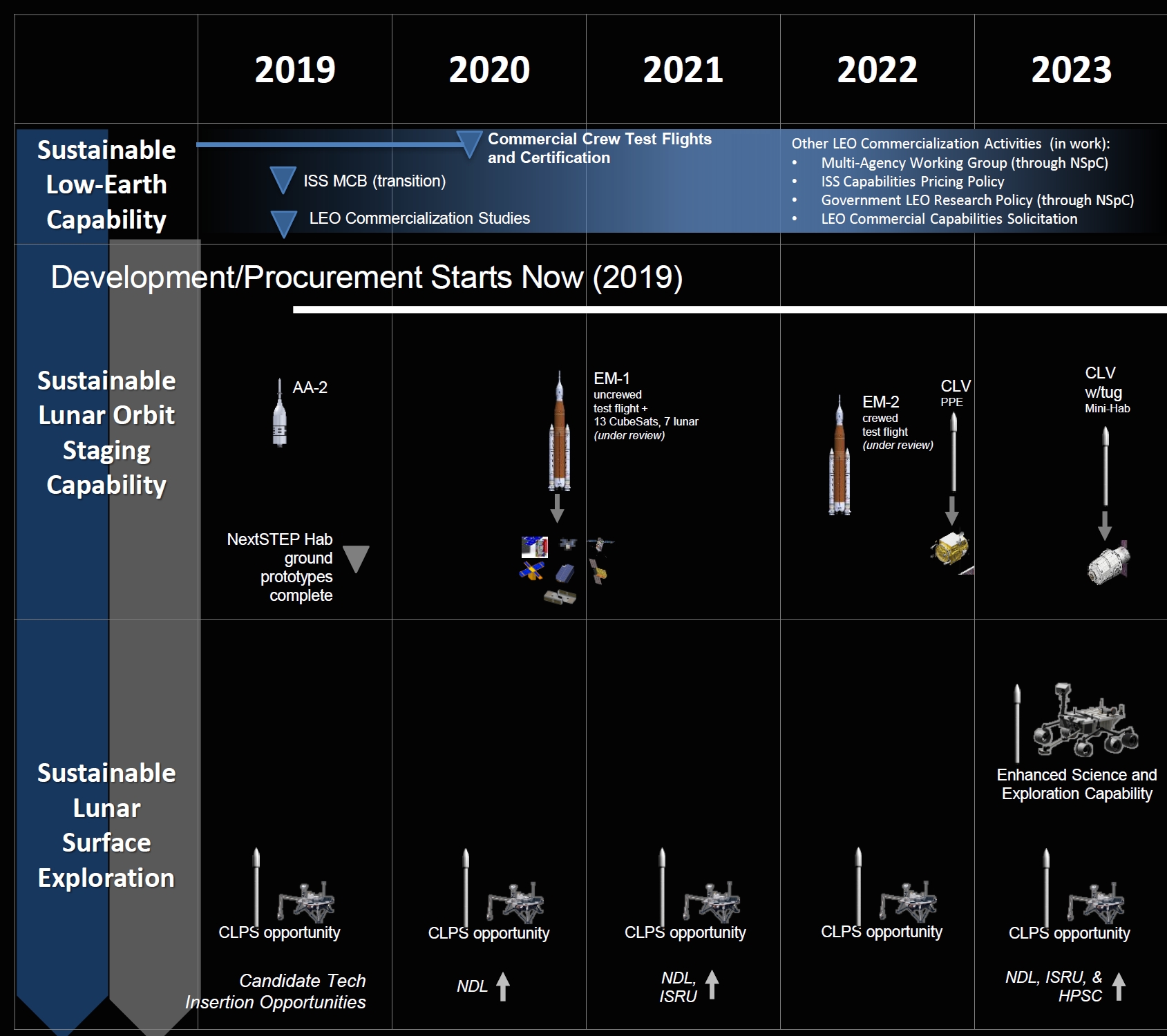
Second Five Year Plan:
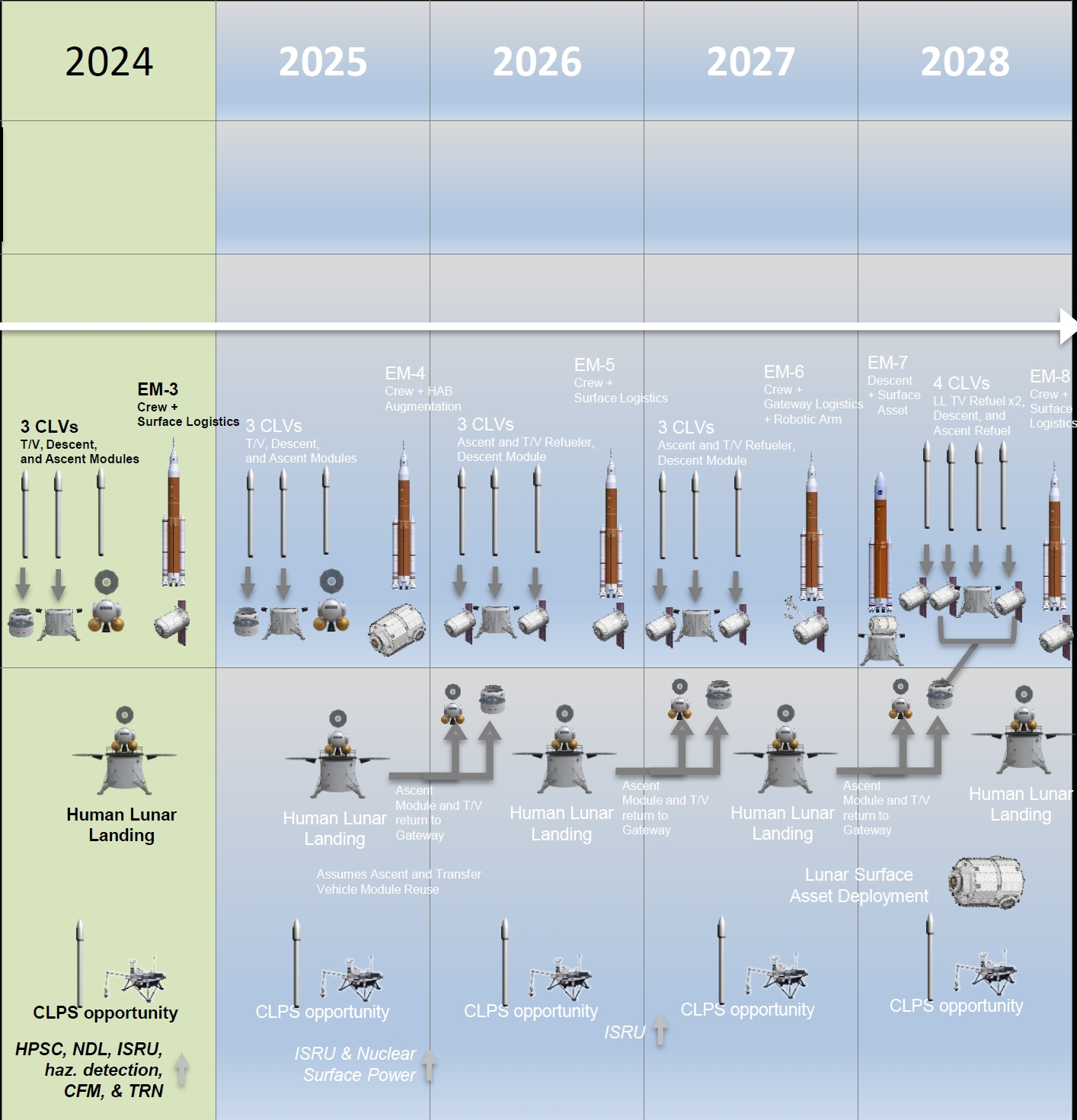
This ten-year plan provides for the use of both private launch vehicles, spacecraft and modules, as well as NASA's development (heavy space launch rocket - SLS Block 1B, Orion spacecraft and the Gateway orbital lunar base) for phased launch of a large payload into the Moon’s orbit. and several crews.
Moreover, as contractors, companies that have already been proven and are working in space, as well as new ones, who will still reveal their potential, will be involved.
For example, NASA has already selected 11 companies to participate in the Artemis program to conduct research and create a prototype landing module.
List of companies
- Aerojet Rocketdyne - Canoga Park, California
- Blue Origin - Kent, Washington
- Boeing - Houston
- Dynetics - Huntsville, Alabama
- Lockheed Martin - Littleton, Colorado
- Masten Space Systems - Mojave, California
- Northrop Grumman Innovation Systems - Dulles, Virginia
- OrbitBeyond - Edison, New Jersey
- Sierra Nevada Corporation, Louisville, Colorado, and Madison, Wisconsin
- SpaceX - Hawthorne, California
- SSL - Palo Alto, California
- Blue Origin - Kent, Washington
- Boeing - Houston
- Dynetics - Huntsville, Alabama
- Lockheed Martin - Littleton, Colorado
- Masten Space Systems - Mojave, California
- Northrop Grumman Innovation Systems - Dulles, Virginia
- OrbitBeyond - Edison, New Jersey
- Sierra Nevada Corporation, Louisville, Colorado, and Madison, Wisconsin
- SpaceX - Hawthorne, California
- SSL - Palo Alto, California
In May 2019, NASA astronauts completed tests and an assessment of the viability of a residential compartment layout in the near-moon space created by Northrop Grumman.
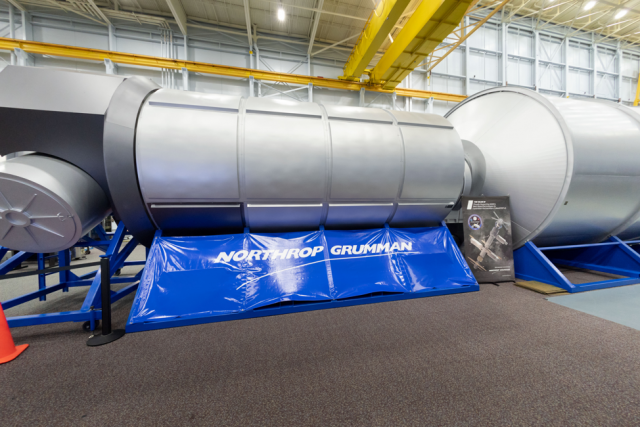
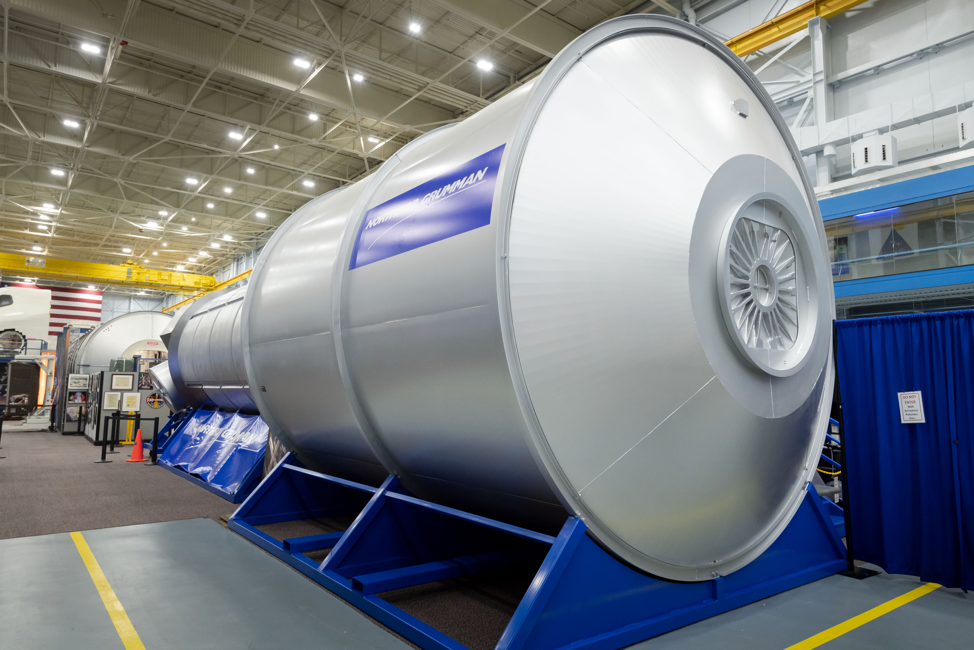
This layout is designed to test ergonomics, functionality and compatibility with the basic "daily tasks."
The module has all the basic elements that a crew of four people will need: a sleeping compartment, a kitchen, equipment for crew training, rooms for scientific experiments, workstations for robotics, and life support systems.
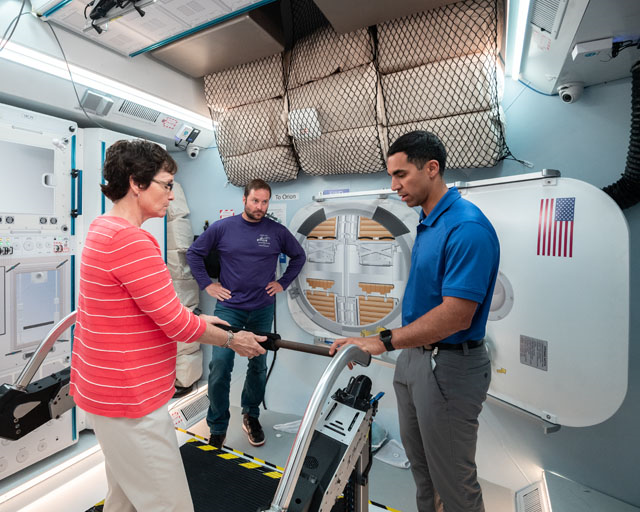
The tests were carried out by future participants of the NASA Lunar Orbital Platform-Gateway program and four astronauts: two with experience on flights of the Space Shuttle and the ISS, as well as two candidates for astronauts who represented the next generation of astronauts.
In NASA, in this way, they try to get feedback from veterans of astronautics, as well as transfer their invaluable experience to a new generation of space explorers.
The budget of the program "Artemis"
The estimated budget of the lunar program "Artemis" is from 6 to 8 billion dollars a year over the existing NASA budget of about 20 billion dollars.
The main problem is the timely and full funding of the stages of the Artemis program so that the deadlines for the implementation of its stages are not disrupted and the planned tasks are completed.
If even half of the Artemis program plan will be realized, then in 2024 we will see the first Earth explorers landing this century in the vicinity of the south pole of the Moon.
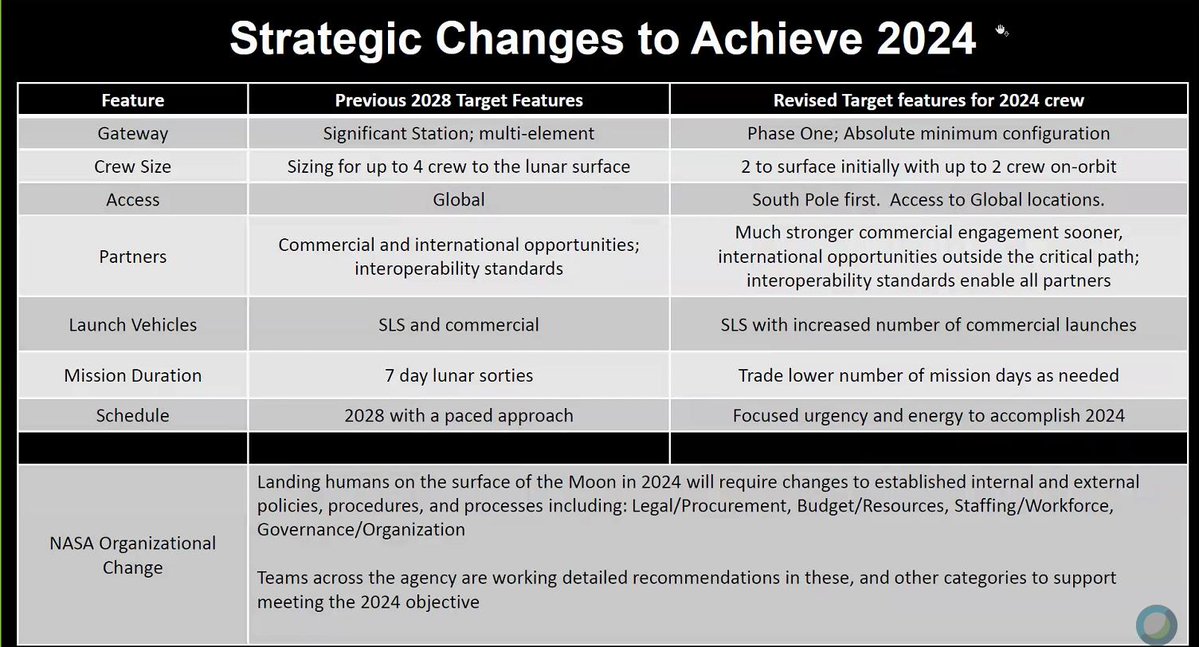
Thus, the exploration of the moon will continue and the circles on the map below will become much larger:

The nearest plans of the Russian lunar program:

Source: https://habr.com/ru/post/452832/
All Articles